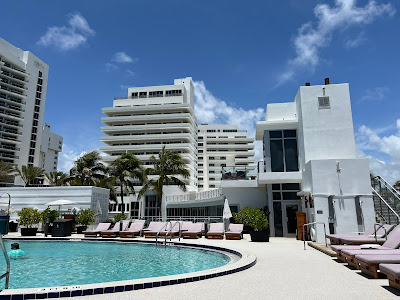By Frank Macek
Summer doesn’t last forever. The days are getting shorter, and the back-to-school ads are creeping in. But there's still time to squeeze in one last trip before the season winds down. Whether you're chasing sun, looking to unplug, or trying to finally use that vacation time, these U.S. destinations offer the perfect late-summer escape.1. Portland, Maine
Maine in late summer is lobster rolls, salty air, and cool nights. Portland has become a foodie haven, blending coastal charm with serious culinary chops. You can explore lighthouses, take a ferry to the Casco Bay Islands, or hit up craft breweries all over town. It’s a compact, walkable city that feels like a secret you’ll want to keep. Try Eventide Oyster Co. for a legendary lobster roll or snag a scoop from Mt. Desert Island Ice Cream. The Eastern Promenade offers perfect picnic spots with ocean views.
2. Jackson Hole, Wyoming
For something completely different, head to Jackson Hole. The summer crowds start to fade by late August, but Grand Teton National Park is still wide open. You can raft the Snake River, hike alpine trails, or take a lazy afternoon in the town square. It’s rugged, real, and refreshingly no-frills. Plus, wildlife sightings are almost guaranteed—moose, elk, and even bears are common in the area. Don’t miss the Aerial Tram to the summit of Rendezvous Mountain for sweeping views.
3. San Juan Islands, Washington
Nestled off the coast of Washington, the San Juan Islands are perfect for a peaceful end-of-summer retreat. You can kayak with orcas, bike around Lopez Island, or browse the art galleries and cafes in Friday Harbor. The pace is slow, the views are unreal, and the weather is surprisingly sunny this time of year. With fewer crowds than Seattle and more charm than you can imagine, the San Juans are ideal for disconnecting without going off-grid.
4. Asheville, North Carolina
Asheville offers mountain views, craft beer, and Blue Ridge Parkway drives. By late summer, the humidity eases off, but the vibrant downtown and hiking trails are still buzzing. Don’t miss the Biltmore Estate or a sunset from Craggy Gardens. The River Arts District showcases local artists in old warehouses turned galleries, while the local breweries (over 30 of them) give Portland a run for its money.
5. Lake Tahoe, California/Nevada
Lake Tahoe straddles the line between California and Nevada, and it shines in late summer. You can swim, paddleboard, or hike above the tree line. The water's still warm enough for a dip, and the summer crowds are starting to thin. Emerald Bay is a must-see, and if you’re up for it, rent a kayak and paddle to Fannette Island. South Lake Tahoe brings nightlife and dining, while the north side offers serenity and scenic hikes.
6. Cape Cod, Massachusetts
Cape Cod in late August and early September is classic New England at its finest. Think quiet beaches, seafood shacks, and breezy bike rides on the Cape Cod Rail Trail. Provincetown is quirky and vibrant, Chatham is charming and walkable, and Wellfleet is perfect for beach days and oyster feasts. Try the clam chowder at Arnold's in Eastham and walk the tidal flats at low tide. It’s the kind of place that slows you down in all the right ways.
7. Sedona, Arizona
Sedona starts to cool down just enough by late summer to enjoy its red rock beauty without melting. Early mornings and evenings are perfect for hiking, and the town is full of art galleries, spas, and scenic drives. Cathedral Rock and Devil’s Bridge are two unforgettable hikes. You can also unwind with a vortex tour or take a pink jeep tour for an off-road adventure. When the sun sets, the stargazing is spectacular—it’s a designated Dark Sky Community.
8. Charleston, South Carolina
Charleston brings the heat, both literally and culturally. By late summer, the evenings are cooler, and the food scene is still hot. Wander the historic streets, take a boat tour through the marshes, or just post up with shrimp and grits on a shaded patio. The city’s mix of history, architecture, and Southern hospitality makes it one of the most rewarding cities to explore slowly. Don’t miss a stroll through the Battery or a visit to Magnolia Plantation.
9. Glacier National Park, Montana
August and early September are the final window to see Glacier National Park before snow starts creeping in. Drive Going-to-the-Sun Road, hike to hidden alpine lakes, and watch for bears and mountain goats. The views are jaw-dropping, and the air is crisp and fresh. The Highline Trail is a must for experienced hikers, while Lake McDonald offers picture-perfect scenery for a more relaxed experience. Book your lodging or campsite early—this place is popular for a reason.
10. Outer Banks, North Carolina
The Outer Banks stretch along the coast of North Carolina with miles of beaches, lighthouses, and laid-back vibes. Surf, kiteboard, or just nap under an umbrella with a good book. Late summer brings warm waters, fewer crowds, and gorgeous sunsets over the sound. Visit the Wright Brothers National Memorial, climb the Cape Hatteras Lighthouse, or take a wild horse tour in Corolla. It’s the kind of family-friendly spot that offers both adventure and pure relaxation.
Bottom Line
There’s still time to salvage summer. Whether you're craving mountains, beaches, forests, lakes, or charming small towns, these U.S. destinations are in their prime right now. From the red rocks of Sedona to the quiet harbors of Maine, each spot offers a different flavor of summer escape. Don’t let the season end without going somewhere that makes you forget what day it is. Book the trip, pack light, and make the last weeks of summer count. You’ll thank yourself come fall.


.JPEG)

.jpg)
.jpg)




















